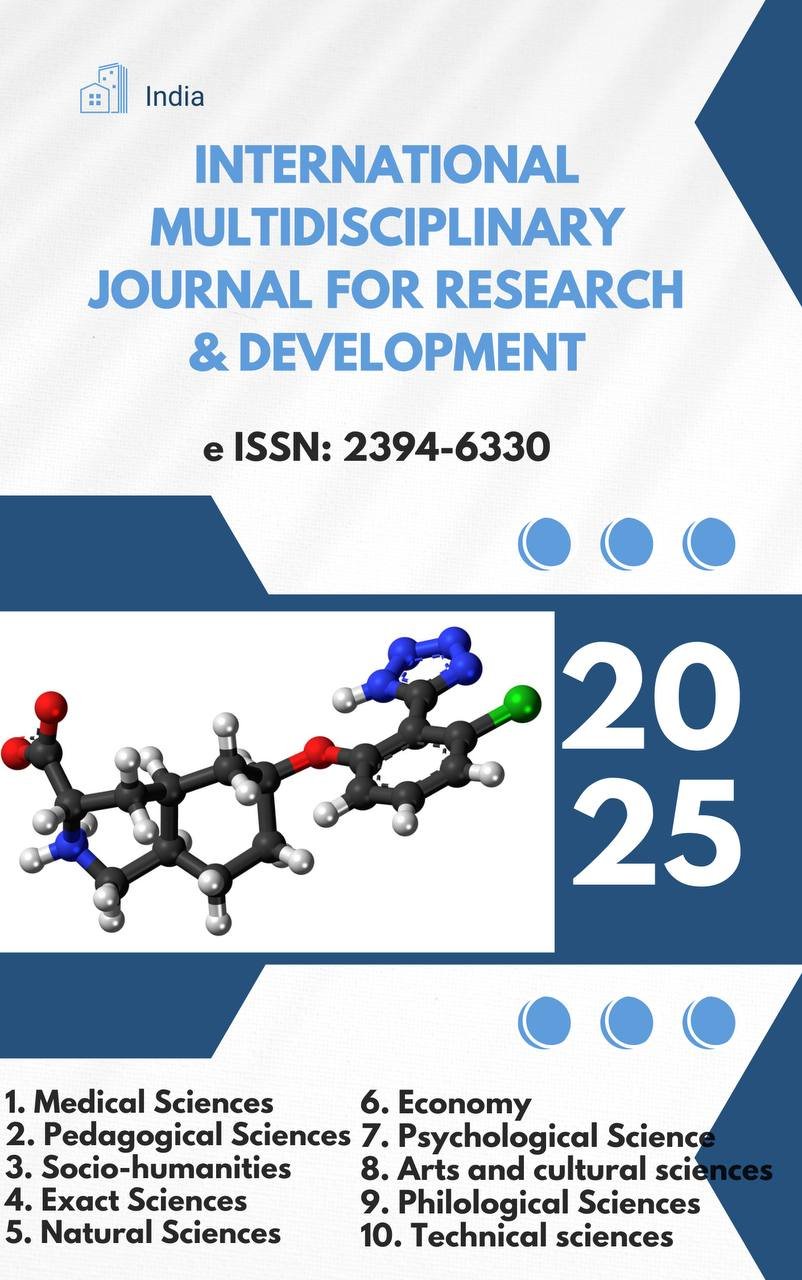OPTIMIZATION OF STORAGE CONDITIONS FOR MINIMIZING NUTRIENT LOSSES IN FRESH FRUITS AND VEGETABLES

Abstract
The postharvest preservation of fresh fruits and vegetables remains a crucial factor in maintaining their nutritional integrity and marketability. This paper investigates the optimization of storage conditions to minimize nutrient losses, focusing on temperature, humidity, atmospheric composition, and packaging. Through an extensive review of existing scientific literature and theoretical models, the research identifies critical variables affecting vitamin degradation, enzymatic activity, and oxidative damage during storage. While experimental results are yet to be conducted, this study lays the groundwork for future empirical analysis aimed at enhancing postharvest practices to extend shelf life and preserve nutritional quality.
Keywords
Postharvest technology, nutrient retention, fruits and vegetables, cold storage, storage atmosphere, packaging, quality preservation.
References
- Kader, A. A. (2002). Postharvest Technology of Horticultural Crops. University of California.
- Lee, S. K., & Kader, A. A. (2000). Preharvest and postharvest factors influencing vitamin C content of horticultural crops. Postharvest Biology and Technology, 20(3), 207–220.
- Watada, A. E., & Qi, L. (1999). Quality of fresh-cut produce. Postharvest Biology and Technology, 15(3), 201–205.
- Beaudry, R. M. (1999). Effect of oxygen partial pressure on aroma volatiles and quality of fruits and vegetables. Postharvest Biology and Technology, 15(3), 293–303.
- Caleb, O. J., et al. (2012). Modified atmosphere packaging of fresh produce: current status and future needs. LWT - Food Science and Technology, 48(2), 302–309.
- Fonseca, S. C., Oliveira, F. A., & Brecht, J. K. (2002). Modelling respiration rate of fresh fruits and vegetables for modified atmosphere packages: a review. Journal of Food Engineering, 52(2), 99–119.
- Thompson, A. K. (2003). Controlled Atmosphere Storage of Fruits and Vegetables. CABI Publishing.
- Hodges, D. M., et al. (2004). Oxidative stress and postharvest quality. Postharvest Biology and Technology, 33(1), 10–18.
- Saltveit, M. E. (2002). Chilling injury is reduced in cucumber fruit stored in low-oxygen atmospheres. Postharvest Biology and Technology, 24(2), 159–165.
- Paull, R. E. (1999). Effect of temperature and relative humidity on fresh commodity quality. Postharvest Biology and Technology, 15(3), 263–277.
- Zhang, D., & Quantick, P. C. (1997). Effects of chitosan coating on enzymatic browning and decay during postharvest storage of litchi fruit. Postharvest Biology and Technology, 12(2), 195–202.
- Rico, D., et al. (2007). Extending and measuring the quality of fresh-cut fruit and vegetables: a review. Trends in Food Science & Technology, 18(7), 373–386.
- Zhang, M., et al. (2011). Edible coatings and films to improve food quality. Comprehensive Reviews in Food Science and Food Safety, 10(4), 391–412.